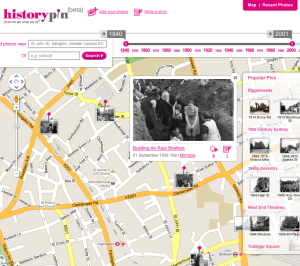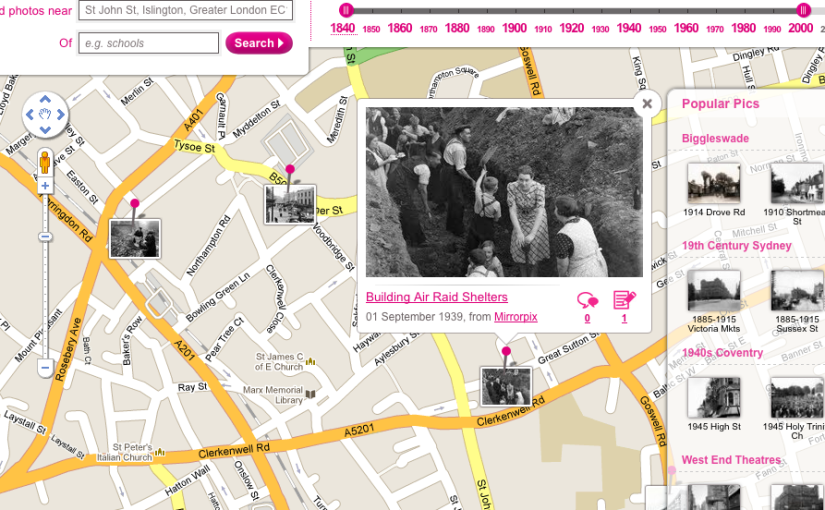The tl;dr version: inspiring project, great enhancements; yay!
Longer version: last night I went to the offices of We Are What We Do for a preview of the new version of HistoryPin. Nick Poole has already written up his notes, so I'm just supplementing them with my own notes from the event (and a bit from conversations with people there and the reading I'd already done for my PhD).
 |
| Screenshot with photo near WAWWD office (current site) |
Historypin is about bridging the intergenerational divide, about mass participation and access to history, about creating social capital in neighbourhoods, conserving and opening up global archival resources (at this stage that's photographs, not other types of records). There's a focus on events and activities in local communities. [It'd be great to get kids to do quick oral history interviews as they worked with older people, though I think they're doing something like it already.]
New features will include a lovely augmented reality-style view in streetview; the ability to upload and explore video as well as images; a focus on telling stories – 'tours' let you bring a series of photos together into a narrative (the example was 'the arches of New York', most of which don't exist anymore). You can also create 'collections', which will be useful for institutions. They'll also be available in the mobile apps (and yes, I did ask about the possibility of working with the TourML spec for mobile tours).
The mobile apps let you explore your location, explore the map and contribute directly from your phone. You can use the augmented reality view to overlap old photos onto your camera view so that you can take a modern version of an old photo. This means they can crowdsource better modern images than those available in streetview as well as getting indoors shots. This could be a great treasure hunt activity for local communities or tourists. You can also explore collections (as slideshows?) in the app.
They're looking to work with more museums and archives and have been working on a community history project with Reading Museum. Their focus on inclusion is inspiring, and I'll be interested to see how they work to get those images out into the community. While there are quite a few 'then and now' projects focused on geo-locating old images around I think that just shows that it's an accessible way of helping people make connections between their lives and those in the past.
A quick correction to Nick's comments – the Historypin API doesn't exist yet, so if you have ideas for what it should do, it's probably a good time to get in touch. I'll be thinking hard about how it all relates to my PhD, especially if they're making some of the functionality available.
